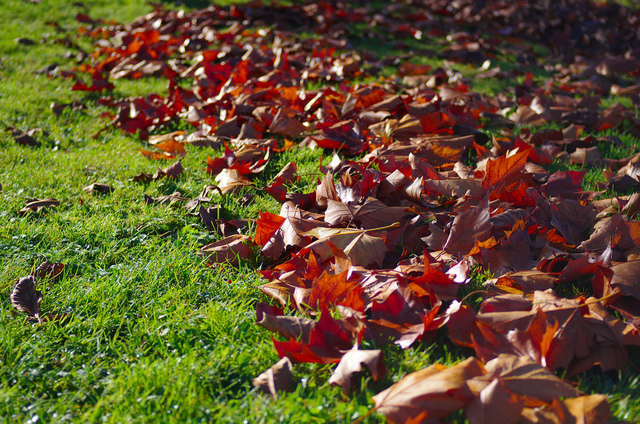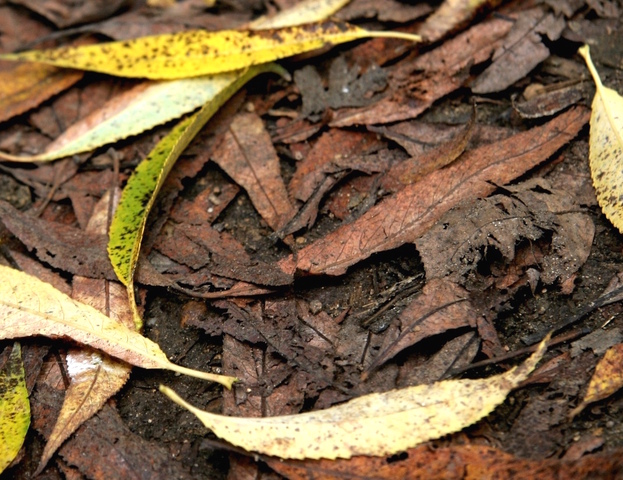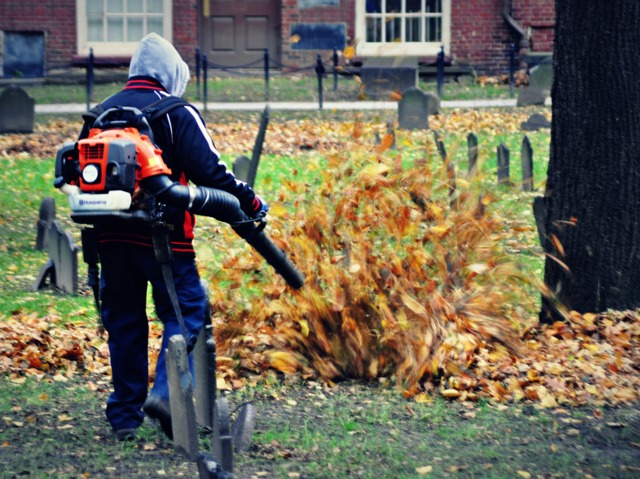Collecting and disposing of dead leaves: two chores that can quickly turn into a headache, but that can easily be lightened and made profitable by recycling these famous dead leaves.
Contents
Why collect dead leaves?
Dead leaves are organic waste that, as they decompose, enrich the soil. In this case, why collect them?

The reasons are various:
In thick layers, they can “suffocate” the lawn or the perennial plants in the beds and borders by depriving them of air and light;
Spread on the pathways, they are dirty and can be slippery (especially on stone or wood slabs);
They can block water drains;
They are, quite simply, unsightly and a source of visual clutter in a garden maintained by a meticulous gardener!
Nevertheless, if there is a place where you can leave dead leaves, it is at the foot of trees and shrubs, isolated or in a hedge: they will play the role of a protective coat against the cold, of a nutrient reserve and of a refuge for numerous auxiliaries (carabid beetles, ladybugs, hedgehogs, scented staphyline)
What to do with dead leaves?
Feed the compost
Like uneaten leaves from the vegetable garden or lawn clippings, dead leaves are welcome in the compost pile. However, there are a few caveats to composting fallen leaves:
A good compost must have a good carbon/nitrogen balance. However, dead leaves are materials rich in carbon and poor in nitrogen. As they arrive in large numbers, it is possible that the compost heap, or composter, will not be able to accommodate them all.
Hard leaves from cherry laurels, photinias, or other heathens (Eleagnus) take longer to break down. If you collect them separately from the other leaves, you can either build a second compost pile dedicated to “hard” organic waste (you will use it after two years), or accelerate their decomposition by shredding them with the lawn mower.
Making leaf litter
Leaf litter is a soft, light substrate that retains moisture and provides mineral elements that can be directly assimilated by plants. It is obtained by composting dead leaves.
When half mature (after one year of composting), the leaf compost is rather acidic and can be used as mulch at the foot of ornamental shrubs, in perennial beds or in the strawberry field. After 2 to 3 years of maturation, it becomes a very good growing medium for seedlings, transplants, cuttings, or even as a substrate for potted plants, mixed with garden soil.

Mulch your plantings
Dead leaves are the easiest material to use for mulching. Already scattered in the garden, all you have to do is to bring them back to the foot of your plants or in a thick layer on the free vegetable garden beds; they will have all winter to degrade and make humus, while preventing the proliferation of weeds. A few branches or bamboo canes placed on top will prevent them from scattering at the first gust of wind.
For a finer mulch, place it at the base of smaller plants by gathering the leaves in a pile and mowing them down.
The toughest leaves, which decompose slowly, can be used on the open beds of the vegetable garden or at the foot of perennials and crops that stay in place for a long time: strawberry plants, squash, etc.
What about diseased leaves?
Except for virulent diseases, there is no need to fear the spread of diseases
How do I clean up fallen leaves?
If you only have a few leaves scattered on the lawn, you can just run the mower. Either you use the mulching function and, shredded, mixed with the grass and left on the spot, they will feed the soil, or you collect them with the collection bin and add them to the compost heap. This can be done when the first leaves start to fall in early fall.
If you have a lot of dead leaves on the ground and want to use them as mulch, potting soil or compost, you need to collect them and transport them to the place of use or storage.
Tip: To avoid having to repeat the process several times, wait as long as possible until the majority of the leaves are on the ground.
Leaf Rake
To collect fallen leaves in a pile, you can use the leaf rake/grass brush with many long, flexible tines that are curved at the end, which is handy for leaves scattered over a small lawn.
Unroll a tarp on the ground and form your leaf pile on top. Just move the tarp to the place of use or storage.
Blower
For large surfaces or to “clean” the beds, the use of a blower will be more useful. There are blower-vacuum cleaners that store the vacuumed leaves in a bag: this avoids the chore of collecting them, but the capacity remains limited (about 40L). Many blower-vacuum cleaners also have a “shredder” function, which reduces the volume of vacuumed leaves, but the price is higher.

Broom
A little more expensive but more ecological, the push broom-cleaner also allows you to collect and transport leaves. It is a large collection box on wheels, equipped with a rotating broom, that you push in front of you to collect the leaves (or mowed grass). For larger lawn areas and a larger budget, there is a version that can be attached to a riding mower. It’s up to you to decide if the investment is worth it. But regardless of the size of the bin, if you have a lot of leaves to collect, you will have to empty it often.

